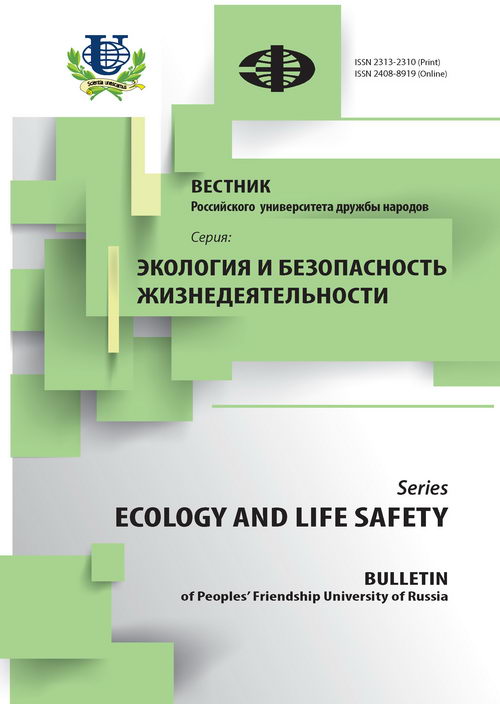THE SEARCH FOR NEW WAYS DISPOSAL OF DRUGS, THAT ARE UNSUITABLE FOR MEDICAL USE
- Authors: Tyumina EA1, Migacheva KA1, Mukhutdinova AN2
-
Affiliations:
- Perm State National Research University
- Institute of Ecology and Genetics of Microorganisms, Russian Academy of Sciences
- Issue: No 4 (2015)
- Pages: 68-73
- Section: Articles
- URL: https://journals.rudn.ru/ecology/article/view/12872
- ID: 12872
Cite item
Full Text
Abstract
Drotaverine hydrochloride and codeine phosphate, antispasmodic and analgesic drugs, respectively, derived from isoquinoline, were evaluated for its biodegradability using actinobacteria from the Regional Specialized Collection of Alkanotrophic Microorganisms. The experiments were performed under aerobic conditions with bacterial cultures. Screening of actinobacteria toward drugs showed that the most drotaverine and codeine resistant strain was Rhodococcus rhodochrous IEGM 647, which was used further in experiments biotransformation. The duration of the biotransformation process drotaverine and codeine was more than 90 days. Using free Rhodoccocus cells pre-grown with investigated substrates reduced the duration of biodegradation to 60 days and to 90 days for drotaverine and codeine, respectively. Adding glucose as co-substrate, and the use of immobilized cells of Rhodococcus (from 60 to 7 days) accelerated significantly the process of drotaverine biodegradation. GC-MS analysis of transformation products resulting from drotaverine biodegradation revealed 3,4-diethoxybenzoic acid, 3,4-diethoxybenzaldehyde and 3,4-diethoxybenzoic acid ethyl ester which were detected in the culture medium until drotaverine completely disappeared. Transformation products from codeine phosphate included hydrocodone, dihydrocodeine and 14β-hydroxycodeine. The obtained data broadened the spectrum of organic xenobiotics oxidized by Rhodoccocus bacteria and proved there potential in decontamination of natural ecosystems from pharma pollutants.
About the authors
E A Tyumina
Perm State National Research UniversityFaculty of Biology
K A Migacheva
Perm State National Research UniversityFaculty of Biology
A N Mukhutdinova
Institute of Ecology and Genetics of Microorganisms, Russian Academy of Sciences
References
Supplementary files















